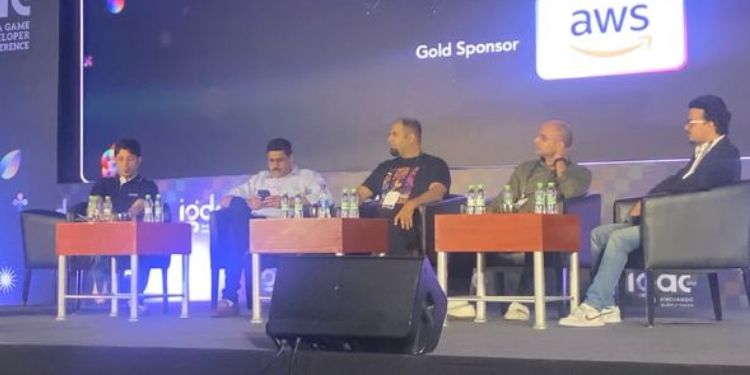A panel discussion on ‘Predictions 2023’ on the opening day of the ongoing three-day India Game Developer Conference (IGDC) in Hyderabad on 3 November 2022 discussed changes that 5G will bring to the Indian Gaming industry and Web3.
The panel was moderated by Anuj Tandon, CEO of gaming verticals JetSynthesys. The panelists were Paavan Nanda, CEO & Co-founder, Winzo; Manish Agrawal of Nazara; Kartik Prabhakara, Founding Partner at Aream & Co; and Animesh Agarwal, CEO & Founder, 8Bit Creatives.
Asked how 5G will impact gaming consumption habits, Manish Agrawal said, “The Jio moment came in three forms. One was that the volume of games increased, but more importantly, I am tired of hearing India is a downward market for the gaming industry. With high quality fast speed Internet happening on mobile, we finally saw multiplayers happening.”
This, according to the speaker, led people to buying items in the game ( which are catalysts to the probability of winning).
“Second is where you are competing and becoming social adda when you start spending on vanity items because it’s like a virtual party hunt. These two things led to the growth of in-app purchases, which happened only because of the infrastructure improvement,” he noted.
He noted that gaming was all about multi-player behavior. “The number of players will double because of improved speed and stability, the monetisation will grow even faster,” he said.
Nanda said, “As mentioned by Manish, the speed of the internet is probably the single most critical decisive factor which enhances the gaming experience. Currently, 4G offers a network latency of 60 to 70 ms; 5G is promising it will reduce it to 10 ms. That has got an incremental benefit which will unlock different experiences for the user.”
According to Nanda, with 5G, gamers will be able to play very deep immersive games.
“From a liquidity standpoint, with 5G coming, people from different parts of the world will be able to play it together. On a global level games will be able to offer larger liquidity pools which currently doesn’t happen,” he added.
Prabhakara said that the biggest use case around 5G generally has been gaming.
“In the Indian gaming market, the biggest beneficiary would be what you can see in terms of experience in the mid-core and multiplayer games. With better processing time and speed, some of the experience will be way better,” Prabhakara added.
He observed that with better user experience, better monetisation follows. In India the growth of gaming with the launch of Jio is well recognised and is a case study in itself. Similarly with 5G, it will get a lot of recognition and attention globally with publishers, according to the speaker.
Animesh said that 5G would be a game changer only if it brings more people to gaming.
“I had an opportunity to experience Airtel 5G last month. I tested the entire concept called cloud gaming, which I believe is a pathbreaking for gamers in this entire 5G process. Even an user with a low-end phone can play the most hardcore games, which is being telecast on screens and computing happening on cloud. Cloud gaming will introduce more people to gaming,” he added.
The panel concluded that 5G will change the gaming habits in the country.
Web3 gaming
Prabhakara said that from a general financing perspective, there has been a slowdown.
“Web3 will continue to grow in terms of investment and monetisation mechanism will be bigger in Web3,” he said.
“Gamers are not going to play games because it’s Web3, they will opt for games because it’s engaging,” observed Manish.
He added, ”This is a cycle in which a lot of people in the last two years thought they will position offerings as Web3 and will be able to raise money – that day is gone. You need to fundamentally think about the same one-on-one game as why would somebody play the game again and again.”

















